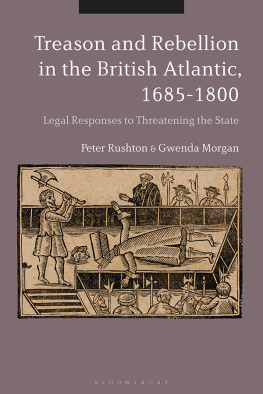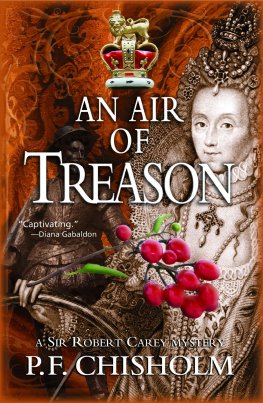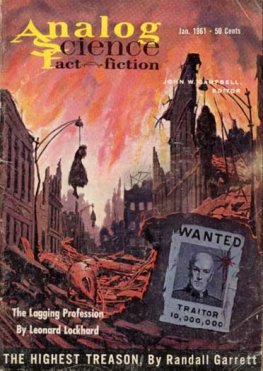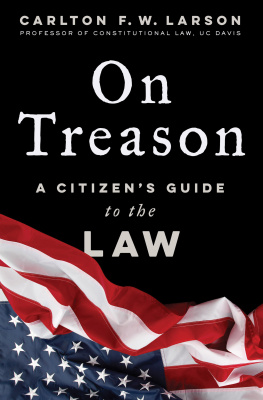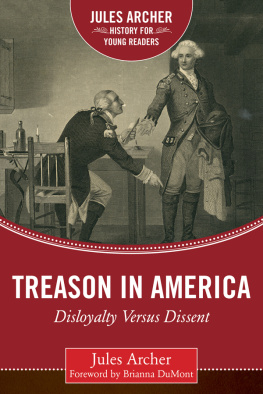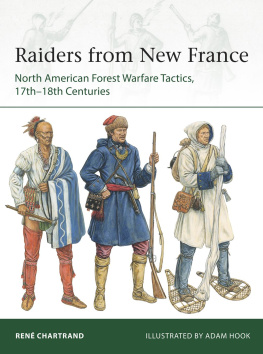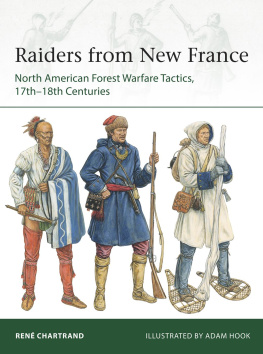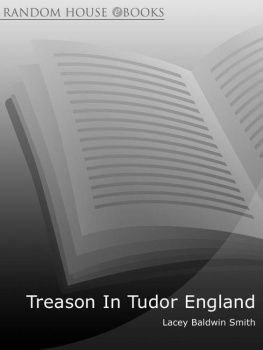Treason and Rebellion in the British Atlantic, 16851800
Treason and Rebellion in the British Atlantic, 16851800
Legal Responses to Threatening the State
Peter Rushton and Gwenda Morgan
This book represents the culmination of many years of archival and library digging, and puzzling over the relationship between the political structure and the legal processes in the early modern British state. We began with mundane crimes in one region, northeast England, even though some, like forging coins or attacking the local militia records, were defined as forms of treason. These crimes led many British criminals to the colonies, where their labour was in high demand, and naturally we built on this work to examine the colonies ambivalent reactions to their presence among their populations. The study of criminal transportation naturally led to the study of other methods of banishment to the colonies, encompassing ethnic minorities and the poor, religious dissidents and political rebels. We also developed an interest in the ethnic cleansing that occurred under British rule, from Catholic Irish to Acadians to maroons. These were regarded as treacherous peoples. It was by this route we arrived at treason and sedition as focuses, in effect a mixture of deeds and words: these were both seen as threatening the state, the subtitle of this book. While some of the topics of this book have been touched on elsewhere, particularly in our book Banishment in the Early Atlantic World: Convicts, Rebels and Slaves (London: Bloomsbury, 2013), we have returned to them here with a different agenda.
We speedily discovered that we needed to range into the realm of contemporary ideas, as well as more modern theories, of the state and sovereignty, or war and the rules of war, of loyalty, legitimacy and law. These were all dilemmas as treason, violent conflict and rebellion pervaded the early modern British Empire. A brief word is required, then, as to our general approach. We have generally avoided the list of well-known individual cases, unless a particular example illustrates the method of operation of a regime, domestic or colonial, at a particular time. It may be that one case provides all we need to know about the prosecution of this most political crime. We have tended by contrast to concentrate on the big batches of prosecutions, or attempted prosecutions, where they have coincided with genuine threats to the British state Jacobites, revolutionary Americans, colonial rebels from the Caribbean in the 1790s and those who rejected and threatened the new United States before and during the War for Independence. We have also explored the limits to freedom evinced by the record of unfree speech in both Britain and the colonies, particularly in revolutionary times. Speech as an indication of dangerous disaffection remains at the heart of our anti-terrorist laws, though, and, as developed in the eighteenth-century concern over an uncontrolled print culture, we are more concerned today about such words being published and available to the susceptible, than about everyday exchanges between individuals. That personal side defamation in the early modern period, hate speech today has always been a focus of local if not national anxiety, and mechanisms are continually being invented to deal with what is generally regarded as a little local difficulty. In terms of peoples determination to sustain their identities and their reputations, however, these verbal attacks have always had immense personal, if not political, significance.
We have tried to keep sufficient background context in each of our major case studies to provide framework for the cases we have taken, but our focus is on the legal procedures, strategies and limitations of the law in practice, rather than the legal doctrines or theoretical frameworks. Many of these limitations were practical, in that the law of treason had much stricter rules as to witnesses, for example, than did laws about ordinary crimes. Other difficulties were essentially political: in an age when appeals against death sentences were to politicians as individuals or committees, there were always doubts about how much severity could be publicly justified. The state was not a machine but an adaptive process, and mercy as much as severity was part of the role of those who made it up, as Douglas Hay suggested many years ago. Because treason was often seen as precursor to something worse, the authorities were always anxious. Yet the nature of that something worse over the period had taken here, because the threat changed from rebellion to revolution. If the British state understood rebellion, to some extent, revolution posed a threat to entire political and social systems, from private property to slavery (which were the same thing in many cases). This became an ideological war as much as one for control in the years after the French Revolution.
As always, we have incurred many debts in the process of what turned out to be a much longer project than we had intended. Naturally, the superb service of the National Archives and the British Library and the supporting facilities of the Institute of Historical Research have been at the core of our work. The British Academy Small Grant Scheme helped us in the early phase of our work up to 2008, and this enabled us to make significant progress in exploring the resources of the United States. So, we also must thank, for their hospitality and helpfulness, the Massachusetts Historical Society, the Massachusetts State Archives, the Library Company of Philadelphia, the South Carolina Historical Society, the Charleston Library Society, the Omohundro Institute for Early American History and Culture (OIEAHC) and the Earl Gregg Swem Library of the College of William and Mary in Williamsburg. In the north of England, our neighbouring libraries of the University of Durham, and the University of Newcastle, provided service, resources and access which were much appreciated. The county record offices of County Durham Northumberland and Tyne Wear Archive Services have also been invaluable. Finally, our own library of the University of Sunderland deserves our thanks.
We have given papers, which have led to this book, on various aspects of this project, at the OIEAHC conference in Halifax 2014, at a couple of the biannual conferences of the European Society for Social-Science History, in Ghent and Valencia, and other specialist gatherings such as the British group for Early American History. Our thanks to commentators we have met, notably Krista Kesselring, Matthew Ward, Simon Newman, Tom Rogers. Peter would particularly like to thank the late Chris Brooks (Professor of Legal History, Durham University) for his helpful advice.
is based on our article Arson, Treason and Plot: Britain, America and the Law, 17701777, History, 100 (341) (2015), 37491, and is drawn upon here with the kind permission of the editor, Dr Becky Taylor, and John Wiley, with thanks.
Finally, our thanks to our anonymous reader for their sympathetic review, highlighting some of the significant omissions, and to the Bloomsbury Academic team for their support, particularly Maddie Holder and Abigail Lane.
This is a study of treason and rebellion in the British Atlantic, an area which consisted of a diverse collection of jurisdictions and territories, different kinds of societies and political systems, with each unit posing difficulties of consistency in law and administration. Moreover, the territory under British control was continually expanding, often rather haphazardly, a process that repeatedly produced difficulties in relations between natives and European settlers. With British authority, it might be thought, went a single body of law and administrative policies: but, as Lauren Benton has pointed out, something as apparently simple as a law of treason, which focussed on actions of disloyalty and threats to the state, proved impossible to render consistently in so many different contexts. Geographic expansion undermined every such attempt at imperial standardization in many European empires, but particularly that of the British. Treason far from kings proved an adaptable but slightly unpredictable strategy for authorities in far-flung colonies.entirely without any procedures of enforcement. Laws of treason, on the other hand, had a long history in each state. In civil wars and rebellions, both were in danger of becoming blurred. Britain experienced at least five civil wars between 1642 and 1800 in Britain and Ireland in the 1640s and 1650s; in Scotland and Ireland in 168890; in Scotland and England in 171516, and again in 17456; and in North America in 177683. If the Irish rising of 1798 is included, war and rebellion, and various forms of treasonable actions against the British State, were almost an accustomed experience of rule in the first empire. As Barbara Donegan has shown, the civil wars of the 1640s and 1650s were only to some extent governed by the rudimentary laws of war. The rivals viewed each other with hostility, and proclaimed very different loyalties, to King or Parliament. For the Royalists, opponents of the king were generally regarded, but rarely prosecuted, as traitors. Parliamentarians inflicted civil and economic penalties on Royalists, attacking their estates and other economic assets, but little more. With prisoners on both sides, paroles of various kinds in force and exchanges continually being agreed, the protagonists generally conducted the war as though it was between foreign powers. There were terrible exceptions, and the record in the age of atrocity is poor in both Britain and Ireland most famously, the massacre by Cromwell at the end of the siege of Drogheda in 1649. Yet in the subsequent 100 years both the laws of war and treason were refined and clarified, the latter in both legislation and practice. The beginning of Britains sequence of wars, initially against the Dutch and then against the French, entrenched a gentlemanly common culture of courtesy and agreement in the matter of prisoners, paroles and exchanges. The law of treason, however, was radically reformed by the two parliamentary acts enshrining rights in statute law for the first time: Habeas Corpus in 1679 and the Treason Act of 1696. While, as we shall see, there were doubts about whether these operated in the colonies, they shaped the policies of the colonial authorities and the assertiveness of those they ruled. This book is therefore concerned with those incidents where rebellion and treason law converged, rather than with rebellions as such. In many ways, the question arises as to why the British state characteristically resorted to legal strategies at all. Rebels had few rights in any political philosophy of the time, and in other empires, such as that of the Turks (the Ottoman Empire), or the ancient Roman Empire, rebels were annihilated militarily and their noncombatant dependants enslaved. Going to court would not have occurred to the rulers of such imperial states. The legal details will be examined in the next chapter, but the characteristic of the British Empire at least was that it was defined by its ruling circles, as an empire of law.

